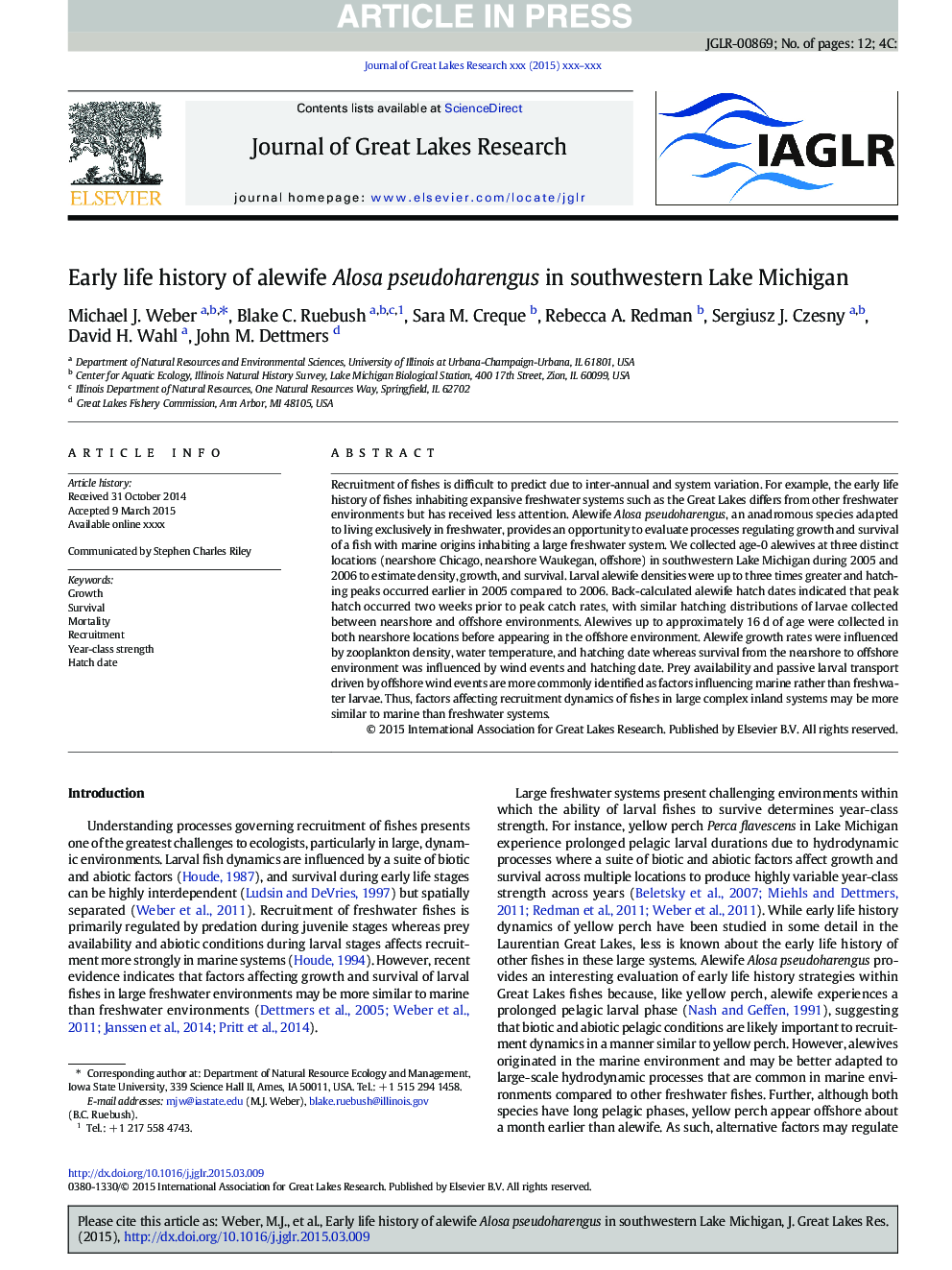| Article ID | Journal | Published Year | Pages | File Type |
|---|---|---|---|---|
| 6305006 | Journal of Great Lakes Research | 2015 | 12 Pages |
Abstract
Recruitment of fishes is difficult to predict due to inter-annual and system variation. For example, the early life history of fishes inhabiting expansive freshwater systems such as the Great Lakes differs from other freshwater environments but has received less attention. Alewife Alosa pseudoharengus, an anadromous species adapted to living exclusively in freshwater, provides an opportunity to evaluate processes regulating growth and survival of a fish with marine origins inhabiting a large freshwater system. We collected age-0 alewives at three distinct locations (nearshore Chicago, nearshore Waukegan, offshore) in southwestern Lake Michigan during 2005 and 2006 to estimate density, growth, and survival. Larval alewife densities were up to three times greater and hatching peaks occurred earlier in 2005 compared to 2006. Back-calculated alewife hatch dates indicated that peak hatch occurred two weeks prior to peak catch rates, with similar hatching distributions of larvae collected between nearshore and offshore environments. Alewives up to approximately 16 d of age were collected in both nearshore locations before appearing in the offshore environment. Alewife growth rates were influenced by zooplankton density, water temperature, and hatching date whereas survival from the nearshore to offshore environment was influenced by wind events and hatching date. Prey availability and passive larval transport driven by offshore wind events are more commonly identified as factors influencing marine rather than freshwater larvae. Thus, factors affecting recruitment dynamics of fishes in large complex inland systems may be more similar to marine than freshwater systems.
Related Topics
Physical Sciences and Engineering
Earth and Planetary Sciences
Earth and Planetary Sciences (General)
Authors
Michael J. Weber, Blake C. Ruebush, Sara M. Creque, Rebecca A. Redman, Sergiusz J. Czesny, David H. Wahl, John M. Dettmers,
